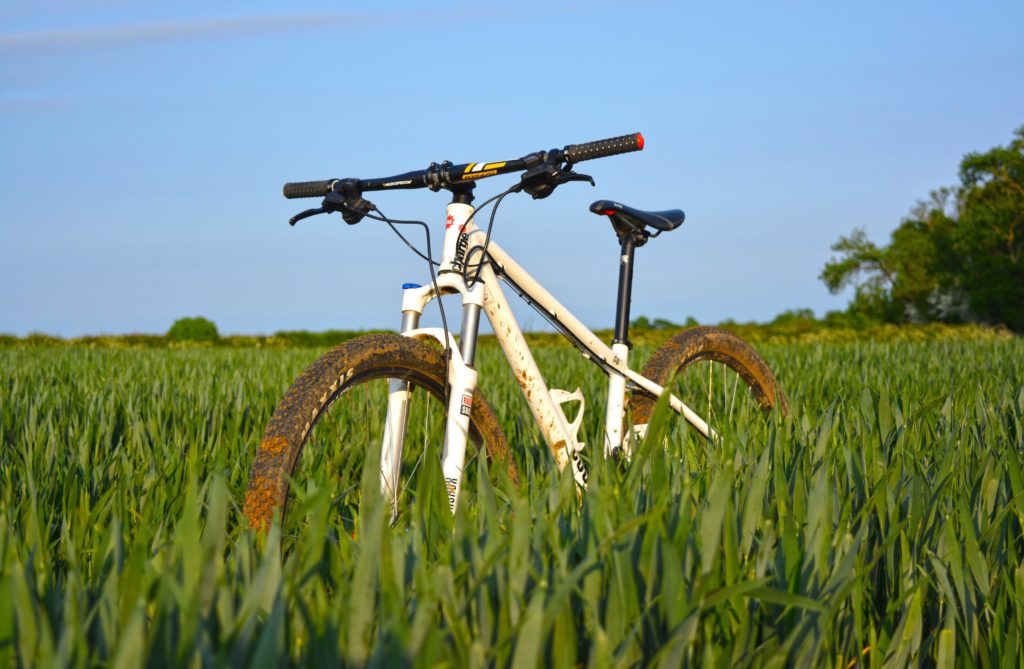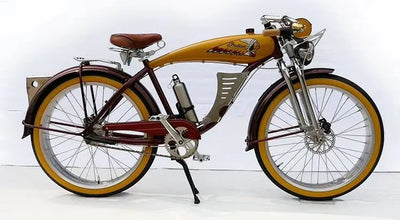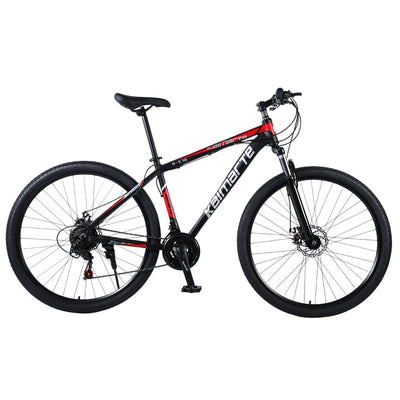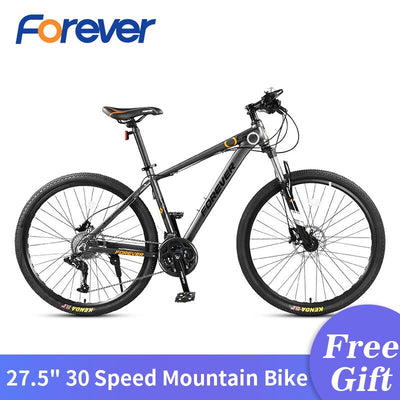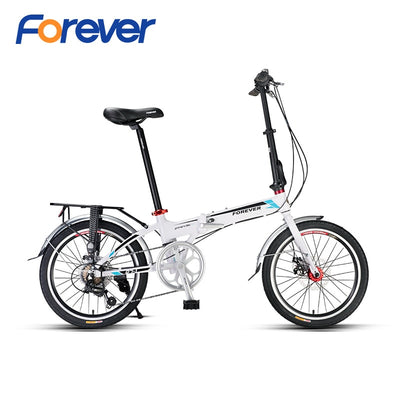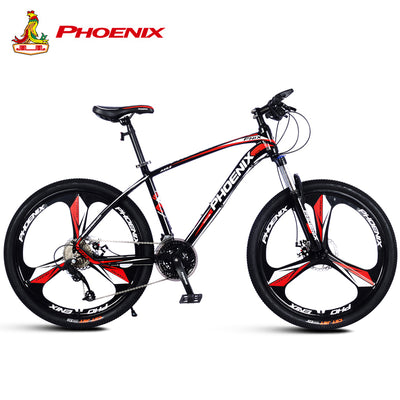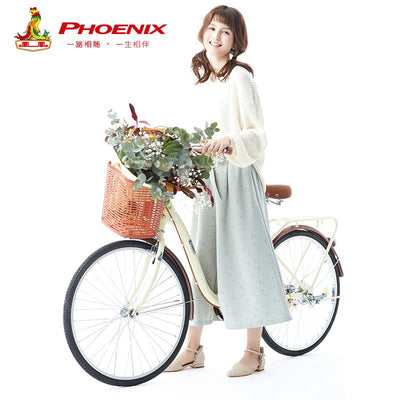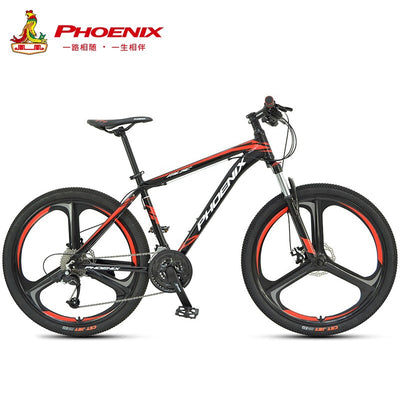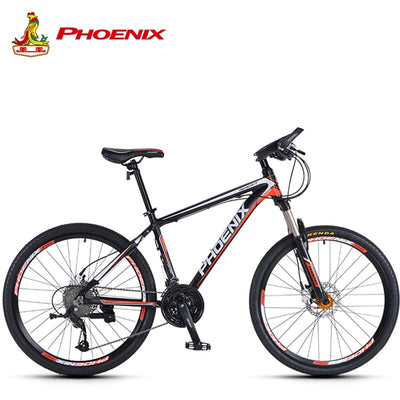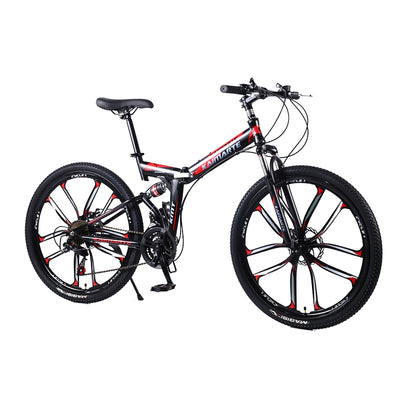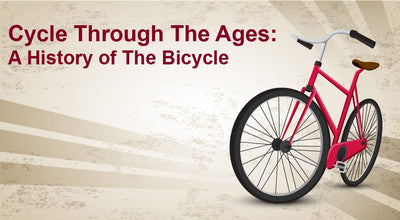Ultimate Beginner Guide to Buying a Bicycle
Posted by Tom Lee on
Buying a bicycle can be intimidating. If you are new to riding, or have been off two wheels for a few years, the choices can seem endless. The aim of this guide is to help you through the key decisions you’re going to need to make and get you set to make a purchase you are happy with for years to come.
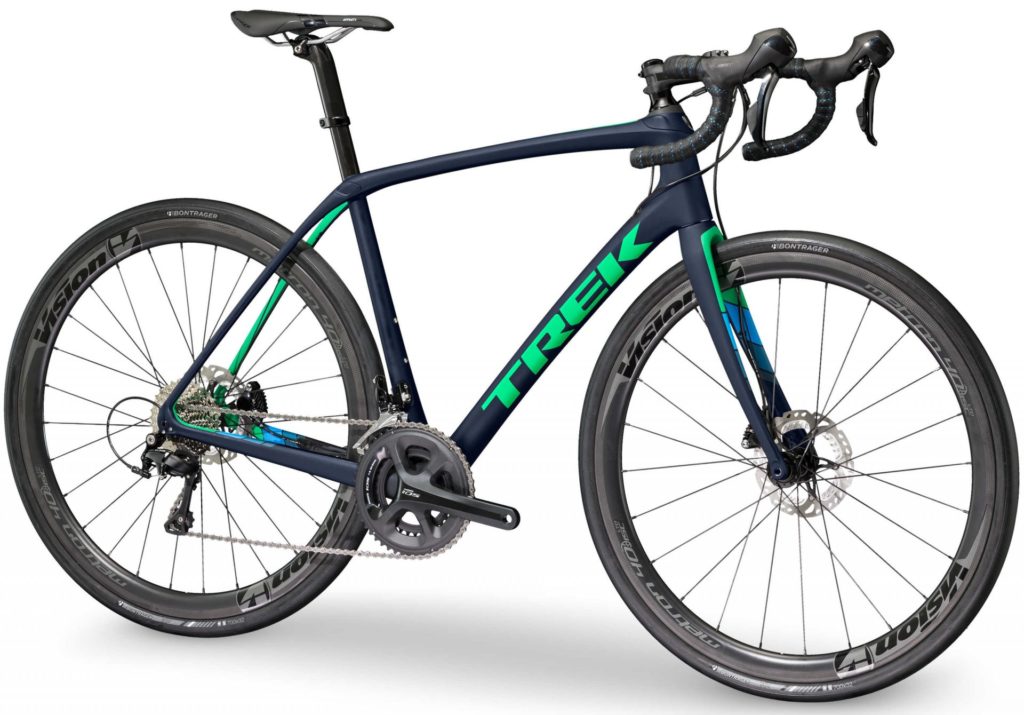
1. Why are you buying a bicycle?
The number of different types of bike available on the market these days is huge. Later in this blog we will cover the different bikes available, but before we get to that stage it’s time to have a think about why you really want a bike. This is crucial to getting a bike that is right for the kind of riding you want to do.
Consider the following questions when buying a bicycle:
What do I want to do on my bicycle?
Whether it’s weekend riding with the kids, commuting or joining a local road riding club, answering this question is the best place to start.
Where do I want to go?
Is it on-road or off-road? City streets, canal paths or even the beach? There are loads of places you can take a bike, but having a clear idea will help determine the kind of bike you need.
How much time/skill do I have looking after a bike?
Expensive bikes have expensive running costs, which is fine if you plan on doing it yourself, but can be a costly investment if not. On the flip side, something like a single speed bike has far fewer moving parts and will need much less maintenance
What’s your plan for 6 to 12 months time?
It’s worth thinking about the future. An extra bit of money now may seem like a big outlay, but its cheaper than buying a bicycle twice. If you’re planning to get fitter and ride further, then plan to buy a bike that can handle that. If you just want a bike to take to the shops, you likely won’t need to spend as much.
Give yourself a bike that allows you to ‘grow into it’ if you are planning to train, don’t look at buying a bicycle that will satisfy you only for a few months to then you realise your skill and training has taken you beyond its maximum potential.
2. Setting a budget / getting a deal

Without a budget, buying a bicycle can be a real challenge. Here are some points that might help you decide how much to spend, and some tips to save you a bit of money when buying your bike:
- Martin Lewis’ guide to spending is really helpful when helping you decide how much money you can really afford to lay out.
- South Coast Bikes make a strong case for investing in a bicycle in their article ‘Don’t Buy A Cheap Bike’
- You will need to budget for more than just the bike. Additional costs such as helmets, bottle cages and gloves can add up very quickly. Have a read of our guide ‘Where To Spend Your First £175 after Buying a Bicycle’ to determine which bits will be most helpful for you.
- Check to see if your employer uses a Cycle To Work scheme. If they do, this can save you money on the price of a new bike. Oh, and you don’t actually have to prove you’re going to cycle to work! Find out more here.
- Second hand bikes can be a good option if you know what you’re looking for and are happy to wait until the right size/condition comes up on the market near you.
- Waiting until after September until buying a bicycle can be beneficial as the big manufacturers tend to start reducing their current models to get ready for their new launches in the New Year.
- Unlike house prices, bike prices don’t fluctuate that much, so another 6 months of saving money can get you a bike that you will be happier with and is likely to last longer.
- You can save some cost by going for bikes with slightly lower grade components. For example the difference between Shimano Tiagra and 105 groupsets on identical frames can often be around £150. This is a call you can make to save short term cost and then gradually replace the individual parts as they wear out.
3. Choosing A Bike
Once you’ve had a think about the type of riding you want to do and got an idea of a budget the really fun part begins: choosing your bike. There really are a bewildering number of options out there and if you are new to cycling you might be surprised how complicated it is.
If you’ve taken a bit of time to plan the type of riding you want to do, hopefully your options will be narrowed down quite significantly, but nonetheless this is by far the largest part of the guide.
3a. Choosing a bike – types and styles
Here’s the biggest decision you’re going to make: what type of bike do you need? It’s a far from simple choice as there are so many different types of bike out there. The reality is you can do pretty much anything on any bike. People have ridden Alpe D’Huez on a Boris bike and sportives on a BMX. However, bikes are designed for specific tasks for a reason.
“You can ride long distances on a hybrid, you can
also run a marathon in a chicken suit. Neither are optimal!”
This section is about trying to get you a bike that you enjoy, and which makes most sense for the riding you want to do.
When starting out, your decision is probably between three; a road bike, a hybrid or a mountain bike. If we generalise, on a basic level we can describe these three fairly easily:
- To borrow some motoring terms, a mountain bike would be your off-road 4×4. Big tyres and good suspension, ideal for rushing about in the mud but not so graceful or fast on the roads.
- A hybrid would be a standard saloon. Generally a bit cheaper than the other two and able to do a bit of everything. Perfectly happy on the roads, but could just as easily tackle a country track without too many problems. Put it on a muddy hill or in a race, though, and it’s going to struggle.
- A road bike is your sporty two-door soft top. Quick and light, perfect for whipping around the roads. Stiff and aggressive with a background in racing. Take it off road, though, and it’s going to start slipping around and cause you no end of problems.
Mountain Bike
The Basics
Mountain bikes are designed for off road riding. They generally have suspension either front or full and wide, grippy tyres.
Key Features
- Suspension, either front only (hardtail) or full suspension.
- Knobbly tyres
- Flat handlebars
- Generally heavier than road / hybrid bikes due to suspension and to make them more durable on rough terrain
- Normally have motorcycle style disc brakes which are better at stopping in muddy conditions
- Lower gearing to allow you to get up steep inclines
Primarily For
- Off road / trail riding
Don’t buy if
- You are doing most of your riding on the road
- You feel like buying a bicycle with suspension just for comfort. Whilst the bike may absorb a few more bumps you will lose a lot of the power that you put into the pedals through the suspension and find yourself riding a heavier bike which will make you less comfortable. The multiple hand positions of a road bike are much more comfortable on a road than the suspension of a mountain bike.
Anything else?
- There are other variants specific to certain styles of riding which are included in the ‘other bikes’ section, though you are unlikely to be buying these as a first purchase.
- If you feel like most of your riding will be off road with a little bit of on road (commuting, for example) you can buy mountain bikes with lockable suspension. This may be a good compromise.
Hybrid Bike
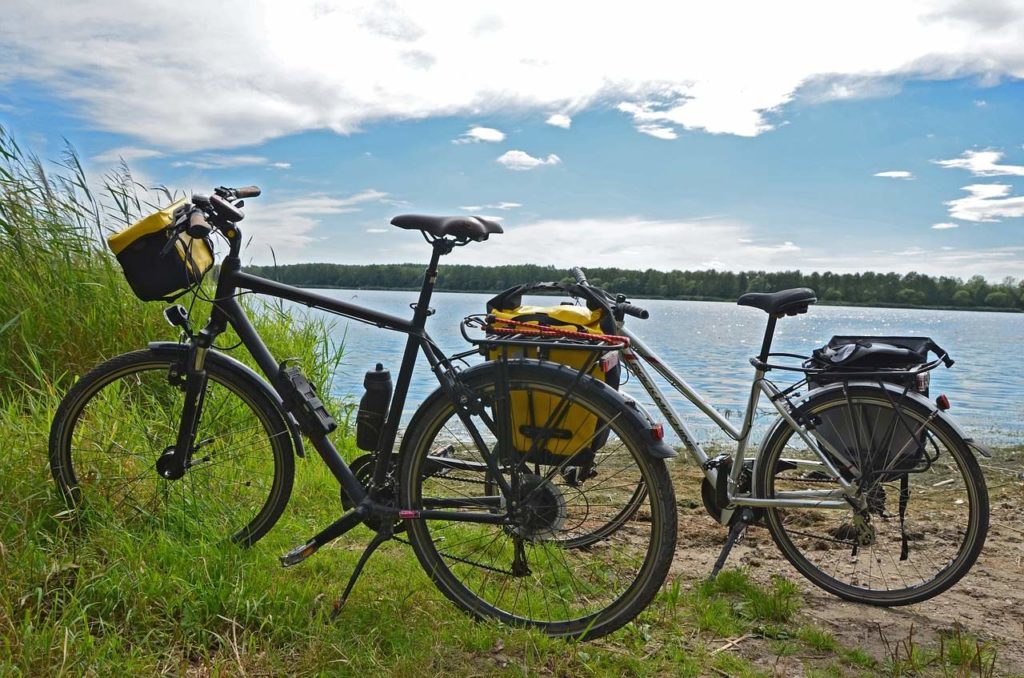
The Basics
A hybrid bike is exactly what the name suggest, a meeting of the two worlds of cycling. Hybrid bikes are built on a spectrum with some much closer to road bikes and others much closer to mountain bikes. They take elements of each to make a bike that can take on many different situations.
Key Features
- Taken from a road bike:
Narrower, generally slick tyres
Higher gearing for faster speeds
- Taken from a mountain bike:
Higher position which makes them ideal for seeing over cars in traffic
Flat handlebars
A more relaxed position with less pressure on your shoulders
They sometimes have suspension
- Easy to fit accessories to such as mudguards
Whilst narrow, the tyres are normally still wider than an average road bike, meaning they can be run at lower pressure for additional comfort.
Primarily for
- City riders
- Commuting
- People who take on a mix of terrain
- Riding with the family
- A runaround to take to the shops etc. (They are normally the cheapest type of bike)
- Touring
Don’t buy if
- You are going to do serious off roading
- You want to take on long road rides. The lack of hand positions and extra weight make them far from ideal.
Anything else?
- The risk of buying a bicycle that is a jack of all trades, is that they are not 100% suited to any one thing. If you are leaning to either on or off roading for the majority of your riding, committing to either mountain or road bikes is almost certainly the right decision.
Road Bike

The Basics
With narrow tyres, stiff / light frames and drop handlebars these bikes are designed for one purpose: quick progress on the roads with the least effort possible.
Key Features
- Narrow, slick tyres (usually 23-28mm)
- Drop handlebars which allow multiple hand positions
- Rigid frames allowing more power transfer
- Gear ratios with large ranges to allow you to spin up hills and move quickly on the flats
Primarily for
- Road riding
- Touring
- Commuting
Don’t buy if
- You plan to go off road (though if you want to do both you could consider a cyclocross or gravel bike)
Anything else
- Even within road bikes there are different types of models, more aggressive frames which get you lower down and more aerodynamic for racing or at the other extreme frames with relaxed geometry for longer rides or touring.
Other Bike Types
These bikes go on a separate list as they are less likely to be your first purchase. They are mostly more specialist bikes designed for a specific purpose.
Based on mountain Bbkes
- Downhill
A variant on a mountain bike specifically designed for downhill racing
- Fat bike
A mountain bike with extra wide tyres designed for riding on rough surfaces such as sand or snow.
- Jump bike
Jump bikes fit somewhere between a mountain bike and a BMX and are designed specifically for tricks.
Based on road bikes
- Cyclocross
Cyclocross bikes are road bikes designed to hit the trails. They generally have knobbly tyres, disk brakes and stronger frames to deal with the additional strain of off road riding.
- Gravel
A gravel bike falls somewhere between road and cyclocross bike and is designed for countries with a lot of non-tarmac roads. They tend to be slightly taller at the front than road bikes for extra comfort with wider gear ratios to help with off road riding.
- Time trial
Time trial or TT bikes are specifically designed for timed race events. They have aero bars attached to the front to allow the rider to get into the most aerodynamic position to give the fastest speed.
Other
- Electric
Electric bikes (often stylised as e-bikes) have an inbuilt motor which can be recharged to give the rider an extra boost. They are generally used in cities and will make hilly areas less daunting to inexperienced riders.
- City
City bikes are designed for short urban rides. They often have very few gears and are fitted with accessories such as baskets for practical journeys. The riders generally sit in an upright position with rounded handlebars coming round for additional comfort.
- BMX
BMX stands for bicycle motor cross. They are small bikes designed for off road racing and stunt riding.
- Recumbent
Recumbent bikes allow riders a reclined position whilst riding. They are designed for comfort and reduction of strain and fatigue, especially on the upper body.
- Folding
Folding bikes are designed for commuting and are often used by people travelling by train. Their small size and easy portability makes them ideal for short journeys.
Single speed / fixed gear / fixie
Single speed and fixed gear bikes get a slightly different category as they could be applied to a number of different bike types. They are usually variations on mountain / hybrid bike frames. They are simple machines with no gears, and the difference is that single speed bikes are able to freewheel (the back wheel spins when you stop pedalling) whereas a fixed gear bike will only move as you are pedalling.
The main appeal of this type of bike is a reduction of time and money associated with maintenance, as there are fewer moving parts to degrade and break. You can see the key points in this article
3b. Choosing a bike – materials
Bikes come in many different materials, and your budget and reason for riding will dictate which is most suitable for you.
The entry point tends to be steel, moving onto aluminium, carbon fibre and then titanium. Be aware that this doesn’t necessarily put the materials in order of quality.
Let’s take steel as an example. Whilst the cheapest frames may be steel it does not make this the worst choice for bike material. A well-built steel frame is more comfortable than aluminium, more durable than carbon fibre and can be a perfect option for you. Equally, carbon fibre can be the lightest and most aerodynamic material, but, at its entry price point it can be weak and unforgiving, so you may be better off going with aluminium.
Price will be the key factor in determining material choice to start with. If you are working with around £500 you are going to be looking at steel or aluminium unless you go second hand. When you get up to around the £800-£1000 and above all three of the key materials become available to you, though you will still pay more for an equivalent bike in carbon fibre. You may initially see it at the same price as aluminium, however you will notice for the same price you will generally get lower grade components.
As you get to the higher prices you will be making choices for different reasons, and your reason for riding will dictate the best material. Racers will want the stiffest bike available to get the highest speeds, whereas those touring will be looking for comfort and durability. Whilst all these materials can deliver partly on these fronts, some have the edge over others. Let’s run through the three most common materials.
Steel
Steel is a traditional material that has been used for building bikes for many years. Steel frames are renowned for their comfort, strength and durability. Steel can also be easy to repair as dents or bends can be hammered out. It is a very affordable frame material to use especially in comparison to carbon fibre and titanium frames.
Positives:
- Ideal for touring. It is easier to find someone to weld a steel frame around the world than it is a carbon fibre specialist.
- Good for heavier riders as it is generally a very strong material.
- In my opinion the narrow tubing and lugs of a well-made steel bike is simply the most beautiful design in cycling.
- Steel bikes are known for their comfort as there is a bit more give in the frame.
Negatives:
- Steel can rust much faster than aluminium so if you live in a wet or humid climate it may not be the best choice.
- Generally heavier than aluminium or carbon fibre. Not so good for all out performance or hitting the hills.
Aluminium
This material is naturally lightweight and stiff, and isn’t prone to rust. It is a reliable material choice, though the extra stiffness in the frames compared to steel means they can be less comfortable. They often have wider tubes than steel frames as the material is generally weaker.
Positives:
- Less prone to rust making it a good touring or winter bike option.
- Stiffness means great power transfer through the frame.
- At the lower end of the price scale a decent priced aluminium frame is nearly always better than cheap carbon fibre.
Negatives:
- Generally stiffer and less comfortable than both steel or carbon fibre but this is not always the case. Adding a carbon seat post or forks can help improve comfort and is common on a lot of top-end aluminium bikes.
- Carbon is very stiff laterally but not so from other angles. For example a carbon frame could take a head-on hit into a pothole and be fine but let it slip and fall onto a kerb from the side and the compression could crack it.
Carbon fibre
This is a very lightweight and stiff material. As a non-metal there are huge design advantages when using carbon fibre to build bikes. The material can be manipulated into aerodynamic shapes and fine tuned for increased stiffness and strength in specific areas on the frame. Carbon fibre bikes are also now becoming more affordable especially at entry level.
Positives:
- Light (as low as 700g!) but still incredibly strong.
- Aerodynamic frame shapes because moulding is much easier.
- A carbon frame can last a lifetime if well maintained ,whereas something like aluminium is described as having a 5-10 year lifespan by manufacturers.
Negatives:
- Repairs are great but where a metal frame bends and dents a carbon fibre frames can crack and and must be repaired before using again.
- It’s not cheap, though they are becoming more affordable over the years
- A cheap carbon frame is rarely better than an equivalent priced aluminium frame.
3c. Choosing a bike – frame size
This section may be the most important part of this guide.
“It doesn’t matter how good the bike you buy is,
if it doesn’t fit you it will be a miserable experience to ride.”
You wouldn’t consider buying a pair of running shoes three sizes too small and heading out for a jog, and the same logic applies with bikes. Riding something too small or too big isn’t just uncomfortable, it can lead to serious and long lasting injuries, so the best thing you can do is head into a reputable bike store and get them to measure you up.
Knowing your measurements
The key pieces of information you are going to need are your height and inside leg measurement. These will help you to determine the bike that is right for you. For a simple way to get your inside leg measurement have a quick read through our article. Note these two bits of information down for future reference.
Choosing your framesize
Now you know your measurements you can start to look at frame sizes.
We have put together a simple table which you can refer to but use it in the knowledge that it is only a guide. Different manufacturers specify their bikes in different ways. As an example, I am 6 feet tall – if I were to buy a Cannondale road bike I would need a 56cm frame, however purchasing one by Specialized would see me needing a 58cm frame. Most manufacturers have guides on their websites and online shops tend to display size guides beside the bike you are looking at.

If you are looking for further resources the ‘Bicycle Frame Size Calculator’ at Ebicycles.com is incredibly useful. If you find yourself right on the limit between two frame sizes go for the smaller one. It is easy enough to put the saddle up and extend the stem if needed, however when you reach the lower limit on a larger bike you have nowhere else to go. Having the saddle higher makes it easier for things such as clipping your bike into a workstand and the slightly lower frame weight can only be an advantage.
3d. Choosing a bike – components and specifications
The components and specifications are the last big things to consider when purchasing a bike. When you build a bike from the frame up these are the additional parts that need adding in order to make the bike usable. These will include everything from the seat post to the handlebars, the chain type to the saddle.
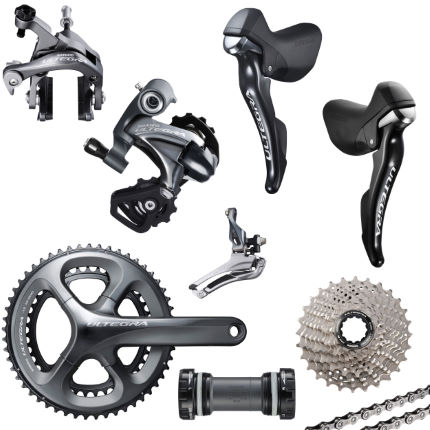 To keep this section as simple as possible we are going to focus on 3 things; gears, brakes and wheels. These are the elements you are likely to get a choice over when buying a bicycle. The brakes and gears tend to be put together in one ‘groupset’ which is a collection of parts that will include the chainring, cassette, derailleurs and levers amongst other things. See the photo to get an idea of the parts included.
To keep this section as simple as possible we are going to focus on 3 things; gears, brakes and wheels. These are the elements you are likely to get a choice over when buying a bicycle. The brakes and gears tend to be put together in one ‘groupset’ which is a collection of parts that will include the chainring, cassette, derailleurs and levers amongst other things. See the photo to get an idea of the parts included.
After the frame, components are the biggest part of your purchase. Opting for better quality components can add hundreds of pounds to the bike. Take the mid range Shimano options. A full Ultegra groupset is about £170 more than a 105 set. Add on a better set of wheels and the difference between two models can be £300 or more. Manufacturers will sometimes mix elements of different groupsets to keep costs down.
It is no different to buying a car. You can buy two cars with exactly the same chassis and engine but pay more. Why? More toys and better components. Groupsets work the same way. You pay more for a better riding experience; lighter weights, smoother shifting, less cables and even electronics.
But better does not mean the same for everyone. Higher quality also means more cost, expensive replacement parts and fiddly elements such as batteries than need recharging. There are diminishing returns as you hit the higher end outlaying massive additional costs for a few grams of weight saving. This might be exactly what you are looking for if you are a professional racer with a team of mechanics around you to look after every single part. But if you are an amateur weekend rider I suspect you will be looking for something a bit different.
Gears
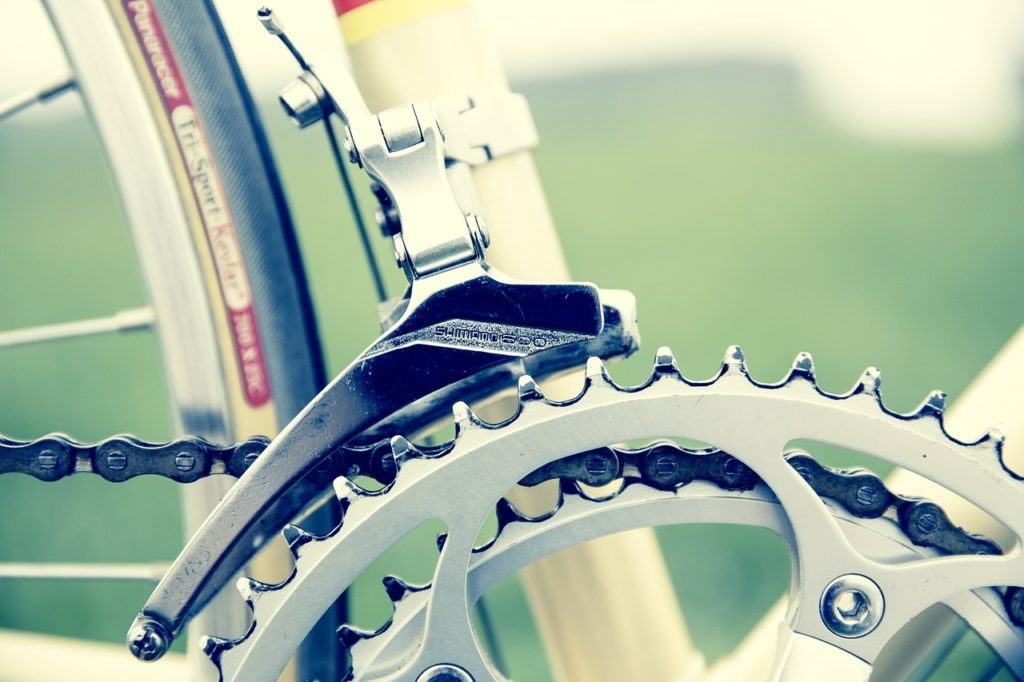
Does the number of gears on a bike really matter? The short answer is no.
What matters is having the right gears, which generally includes a low enough bottom gear to get you up the hills and a high enough top gear to allow you to reach the speeds you desire without your legs having to spin too fast. Some bikes don’t have gears at all. Fixed gear and single speed bikes run on one cog meaning the only way to generate additional power is to pedal harder.
Most of you will be looking at geared bikes, so how do you decide between gears when buying a bicycle? Most bikes will have a front chainring and back cassette. The front chainring ranges from a single gear up to three (known as a triple). The rear cassette tends to either be 10 or 11 speed, though many different variations are possible.
The crucial element of gears is not the number but the ratio. This is the difference between your largest ring on the front and the smallest cog at the back and vice versa. This can get very complicated very quickly so I am not going to attempt to try and explain it all here. If you are looking for some in-depth reading, check out our article, ‘a beginners guide to bike gears’.
The decision you will be making on most bikes will be fairly limited. If you have already decided on a model you will be very restricted by what the manufacturer offers. You can always retrofit a different set of gears but this can be complicated and expensive. Depending on the answer to our very first question ‘why do you want a bike?’ this will help you make some decisions on gearing.
Planning to travel long distances and want an easy ride up the hills? You may be looking for a compact chainset with a 36 tooth cassette at the back to give you a bit of extra range in the low end. Planning to go short distance racing? You may opt for a single chainring at the front and a very narrow range of cogs on the cassette at the rear to give you very small jumps between gears to help maintain your power. The options are almost endless but worth spending some time thinking about.
Brakes
Brakes are essentially split into two types: rim brakes and disc brakes.
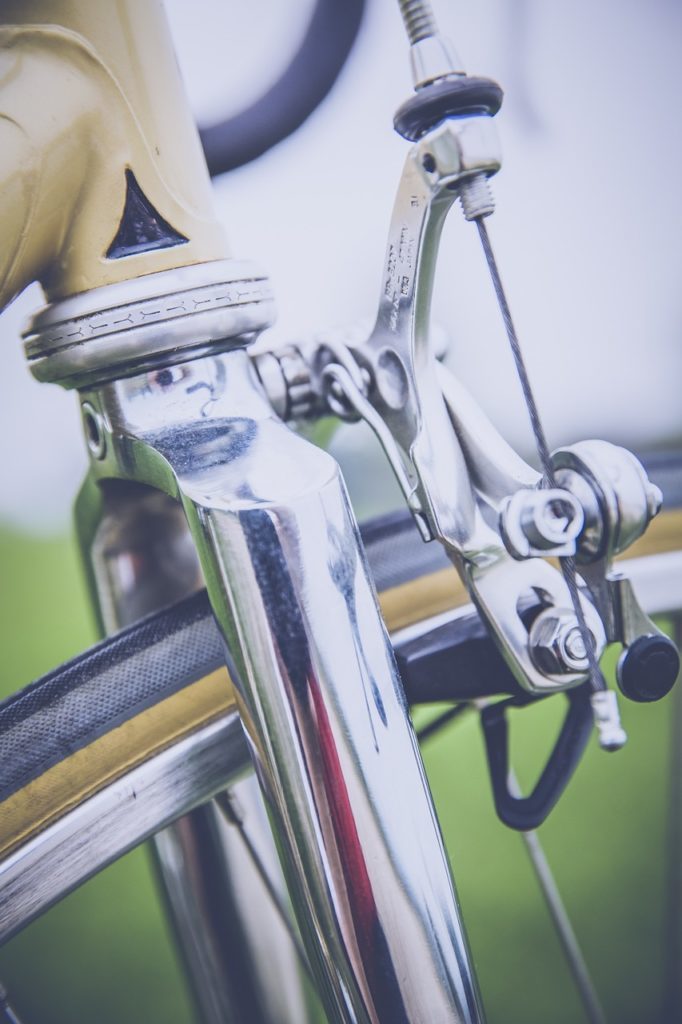
Rim brakes are the traditional kind that you see mounted above the wheel. There are two types: calliper, which is one mechanism attached by a single bolt, and cantilever brakes, which have two arms mounted on each side of the fork.
Disc brakes are found near the middle of the wheel and can be compared to the brakes you’d find on a motorcycle. They have long been found on mountain bikes and more recently introduced to road bikes.
Whilst an important part of the bike, it is rarely a choice you get to make for individual models. Bikes are designed for either rim or disc brakes thus needing different attachments, fork clearances and wheels. The model you choose with either have rim or disc brakes, it is not something you can choose. For some road bikes disc brakes are now an option as you move up the range, but this will involve an added cost rather than a simple swap over.
The advantage of disc brakes over rim brakes is seen as the following:
- Being mounted near the centre of the wheel means they are unaffected by how true the wheel is.
- Having them further away from the tyre means they are less affected by mud and grit.
- Disc brake rotors are made of stronger materials than wheel rims meaning the pads can be designed to last longer (though due to the small surface area this is not the case in all conditions).
- They stop a bike faster, especially in the wet.
- The wheels of disc brake systems can be designed lighter as the rims do not have to be so thick in order to deal with braking.
- Wheels with disc brakes tend to last longer as there is no rim wear which weakens the wheel.
Having said all of this, disc brakes have still not been approved by the UCI for racing as the sharp edges are seen as dangerous in a crash. Many riders still prefer rim brakes as they are lighter and more bikes still have them on, meaning a replacement is easier to find in an emergency.
Wheels
As with brakes your choice of wheels is more likely to influence the model you choose rather than the other way round. That is to say bikes will be fitted with a certain set of wheels and you won’t generally be given the choice to swap them over. Decide in advance if the type of wheel is important to you and include that in your decision making process.
Below I will cover the likely choices you will have to make on road and mountain bikes. The advice given in the road and mountain bike sections can be applied to hybrid bikes.
As a side note, your choice of brakes and gears will also determine your wheel choice. You will need a different hub to house either 10 or 11 speed gears and different wheels for disc or clincher brakes. If you make your choices in the right order the wheel choice for this topic will hopefully be clear by this point.
ROAD BIKE
Most road bike wheels are made at a standard size of 622mm, often described as ‘700c’. So if size is not what we’re looking at what choices are there to make with a road bike wheel?
Aerodynamic wheels with deep rims are perfect for time trials, light wheels for climbing are great for the mountains and longer distance or touring wheels which tend to be stronger with a higher spoke count to prevent mechanical issues. Often these will be determined by the type of bike you’re buying as the manufacturers will change the wheels to suit the type of bike they are selling. At the low end of the bike market you will essentially get what you’re given but they are an easy component to upgrade in the future if you have the money,
Secondly you will have the choice between tubeless and clincher tyres. Clincher tyres are your regular tyres that hold an inner tube whereas tubeless tyres have a special rim that means they need no innertube (like a car tyre). It is unlikely that you will have the choice on a beginner bike.
The final point to consider will be the width of the tyre. Up until a few years ago 23mm wide tyres were a standard whereas now 25mm and 28mm are just as common. Wider tyres can be much more comfortable as they are run at lower pressures but also reduce rolling resistance so can be faster.
MOUNTAIN BIKE
With mountain bikes the key decision you are going to need to make is on wheel size. There are three sizes available to you, the key benefits are listed below.
- 26” wheels are the main size wheels for most mountain bikes. For a long time, they were the only size available.
- 29”wheels have become much more common in recent years. The key advantages of 29ers are their ability to roll over small objects more easily, a high ground clearance – keeping your precious components out of harm’s way – and are also really well suited to taller riders. On the downside they make the bike heavier, meaning they are slow to accelerate and tougher up the hills.
- 27.5” (650B) wheels are newer still. Supposedly these combine the best elements of 26 and 29 inch wheels.
You can find loads more information on the debate between different mountain bike wheel sizes here: Ending the debate: 29er vs 650b vs 26”
3e. Choosing a bike – things not to worry about
To finish our section on choosing a bike, we want to run through a few things that may seem very important, but we’d recommend not to worry about too much.
Saddle
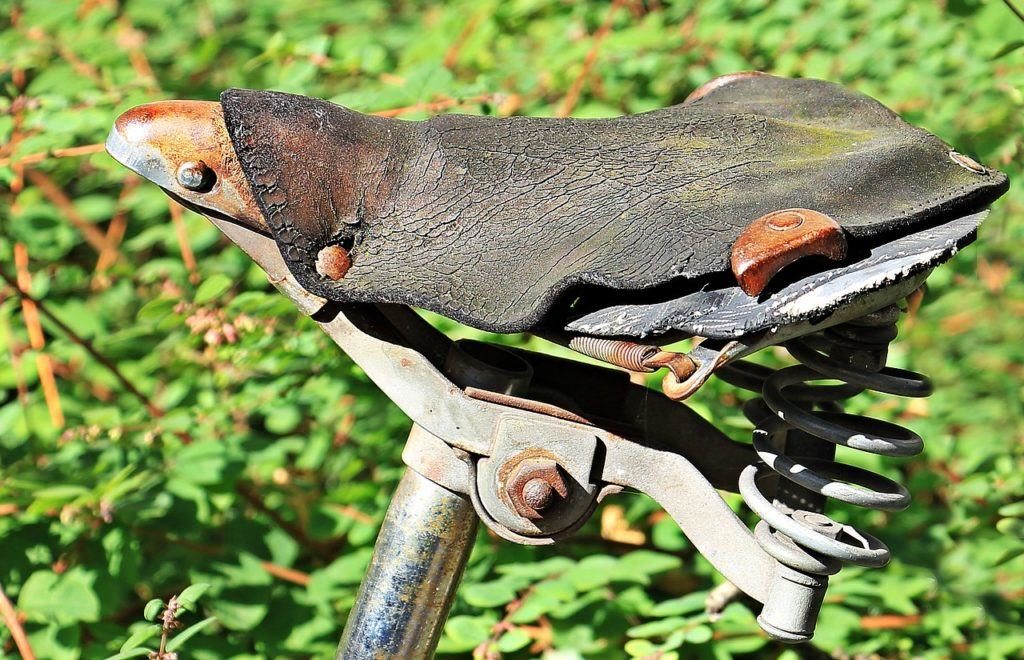
Your body only connects with a bike in three places and the saddle is the most important of those! However, don’t hang your hopes on the saddle that comes with the bike being the right one.
It’s not unusual to go through a few saddles before settling on the right one. A saddle is a very personal choice and what suits one person may be completely wrong for another. You may be lucky and find the saddle that comes with your bike is ideal for you but if not don’t let it be the deal-breaker! They are easy to change and (relatively) inexpensive.
Don’t necessarily expect your first few rides to be comfortable: it will take a while to adjust to sitting on a bike so give your saddle a few rides out before you write it off completely.
Pedals
Pedals are another easy to change part of the bike. Most will come with flat plastic pedals, though, ironically, more expensive bikes tend to come with no pedals at all! This is because there are many different choices for pedals to fit different types of shoe through a system known as ‘clipless’ (though, with even further irony, these actually do clip in!).
So don’t worry about pedals. You may want to upgrade them, decide to put toe clips on to attach your shoes, play around with clipless or any other number of options. Go with what you’re given and change over later.
Colour
A great bike can be a terrible colour and often you are not given a choice! I found this exact problem with Cannondale Synapse bikes. I hate the luminous green that is associated with Cannondale but sometimes you’ve just got to suck it up in order to get the best bike for you (although if you really hate it you can get a decent respray for about £100).
4a. Buying a bicycle – where to buy from

Bike shops
“58// Support your local bike shop.
Going into your local shop, asking loads of inane questions, takingup the staff’s time, then going online to buy is akin to sleeping with your best friend’s wife, then having a beer with him after. If you do purchase parts online, be prepared to mount and maintain them yourself. If you enter a shop with parts you have bought online and expect them to fit them, be prepared to be told to see your online seller for fitting and warranty help.”
It’s not often we agree with the ‘rules’ of the Velmonati however this is one should be carved in stone. When it comes to buying a bicycle your local bike shop is a great place to start.
For the purpose of this section have not distinguished between small and large bike retailers. Some readers will find this highly offensive, but ultimatelyit is about finding a good store. If you have a small local retailer nearby then fantastic, go and use them. You can still have good experiences at larger retailers such as Evans. The key is to find a shop that is close enough to you that you can use again and again for bikes, parts, repairs, clothing and even just advice.
POSITIVES:
- You get face to face advice.
- If you’re feeling brave you can try and negotiate on the price.
- This may be as simple as trying to get some accessories thrown in or a free service.
- Price is often the biggest barrier to shopping in a store vs online so see if you can overcome it
- Martin Lewis has produced a great guide ‘How to haggle on the high street’.
- Be reasonable with the small retailers as they will make far less profit!
- You can be measured up and find a bike that fits you.
- The store will assemble the bike for you.
- They will often complete a basic bike setup for you getting the saddle and handlebars in the right position.
- There is a chance you could be taking a bike home with you that day!
- Quite often they will offer a follow up service after a period of time. Cables stretch, brakes pads rub, spokes loosen. Bikes take a time to settle down so having someone around to do a routine follow up can be really useful.
- You can tap in to the local cycle community that often centres around a store.
- It can be the start of a relationship, someone you can trust to look after your bike in the coming years.
NEGATIVES:
- The choice is significantly less than online. Retailers tend to only have contracts with a small number of manufacturers so if you have set your heart on a certain brand of bike you may have to travel a long way to find it.
- Price is often higher as shops have overheads such as rent and labour that are easier to control in the online world. I would urge you to consider long term value vs short term price when considering this point though. You may save 10% upfront but what if they throw in a couple of accessories, or offer a free service? What about having a trusted local mechanic who can regularly service your bike and help you get it set up? Sometimes the saving is not the right thing to do in the long term.
Online

Buying a bicycle online can be a great option and with so many stores now available the choice is virtually endless. Some companies have chosen to exclusively sell their bikes online to minimise overheads and keep prices down. With packaging and couriers getting better and the convenience of getting a bike to your front door this could be a fantastic option.
POSITIVES:
- You can shop around multiple retailers to find the exact bike you are looking for.
- Because of the number of stores available you tend to be able to buy a bike at a better price online.
- Some bikes are exclusively available through online retailers.
- You can often see reviews from other customers of the bikes you are looking at giving you more confidence in what you’re buying and where you’re buying it from.
NEGATIVES:
- You are going to have to assemble the bike yourself (or try and get a local shop to do it if you’re feeling very brave!)
- You will have to set up saddle height and similar measurement-based aspects yourself.
- You are unlikely to get any kind of service deal thrown in so this will be an additional cost in the first few months (most bikes require a tune up fairly soon after purchase due to things such as cable stretch)
- You won’t be able to have a test ride so size / fit may be an issue (though some online stores now give you a cooling off period).
Used
Buying a bicycle used can save you a lot of money but you also run a much higher risk that the first two options as you are unlikely to have any form of guarantee or returns policy. Finding a bike in exactly the right size or spec can be very hard so you are going to have to be a bit more open minded to the options available. Getting to know what you’re looking for will take more research than with a new bike. You will need to be able to look out for signs of damage and wear or risk potentially large bills on top of your initial purchase.
There is a really useful guide at BlueBicycleBook.com which will help you know the price to look out for on specific models.
POSITIVES:
- You will find the bike you are looking for at potentially a much lower price.
- You get to give a wonderful bike a new home
- There is likely to be less depreciation after purchase than on a new bike.
- The money you save can be used to upgrade parts or have the bike serviced to bring it up to standard (or just shove in your back pocket!)
- If you already have bike maintenance skills, you can buy a bike that needs a lot of work and invest time into bringing it back to life. This will save you a lot of money.
- If you use a service like eBay or Craigslist you can ‘set and forget’ the search you are looking for and get it to notify you every time an appropriate bike becomes available. You may for example set it for road bikes with 56” and 58” frames within a 10 mile radius of your home. As long as you are not worried about timescales you are likely to eventually find something good that way.
- A second hand bike can be perfect to learn the world of cycling without taking a big risk on price. You can also practice your maintenance skills on it without being worried about causing costly damage.
NEGATIVES:
- You don’t know entirely what you’re getting, especially if you haven’t viewed it beforehand.
- It can take time to find the right bike in the right size. Especially if you are limited in how far you can travel to pick one up.
- You can end up with stolen or ‘fake’ bikes (frames claiming to be of a well-known brand but made with much cheaper parts). If it seems too good to be true then take extra care.
- Be really clear on what you’re looking for. For example, ‘new carbon forks’ would make me wonder what happened to the old ones: were they damaged in a crash? And if so what potential issues could there be with the rest of the frame? Make sure you read into the information available and ask questions before you commit to a purchase.
- Sometimes the price may not lead to long term value.
4b. Buying a bicycle – key questions to ask
Now you’re clear on what you want to buy and where to get it from it’s time to arm yourself with some key questions.
You may think this applies purely to in store buying but don’t be afraid to use these questions online, too. Many big stores will have ‘online chat’ or contact forms where you can get information. The smaller companies will usually have phone numbers so you can ring through to the sales room (one of our team did this once and managed to find a bike in the previous year’s stock at a massive discount in a small store in Wales!).
We have also included some important questions to ask when buying a bicycle second hand. These can be asked of the seller via Craigslist or eBay or in person if you are at an auction or garage sale.
ABOUT THE BIKE
- Will this one fit me?
- Do you think it will suit the type of riding I want to do?
- What other similar models are available?
- How does this bike compare with other bikes in the same price bracket designed for the same purpose?
- Would I get something significantly better if I spent ‘x’ amount more?
- What would be the benefits?
- Would I get something significantly worse if I spent ‘x’ amount less?
- What would I lose out on?
- Do you offer a test ride?
- A good shop should encourage this as they’ll want you to be happy
- Do you offer a fitting service to get the bike set up for me?
PRICE
- Can you do me a deal?
- Would you throw in a couple of accessories to get me going?
- Could you match the online price?
- Do you offer a guarantee?
- Is this bike likely to go on a promotion soon?
MAINTENANCE
- Would you install any accessories I buy when you are doing your setup checks?
- Do you offer ongoing servicing? Do I get a tune up or first service in the deal?
- Are any of the parts on this bike really expensive to replace?
- What basic checks do you think I should learn for myself?
SECOND HAND
- Are you the original owner? If not where did you buy it initially?
- How many miles do you think the bike has covered?
- Has this bike been had any crashes?
- Has the bike had regular services?
- Have any modifications been made to the bike?
- When was the last time the chain / chainset / chainring were replaced?
- Do you know of any problems with the bike?
- Could I come and view the bike first?
- Do you mind if my local bike shop check it out first?
- Do you deliver, if so which courier do you use and how will the bike be packaged?
4c. Buying a bicycle – taking a test ride
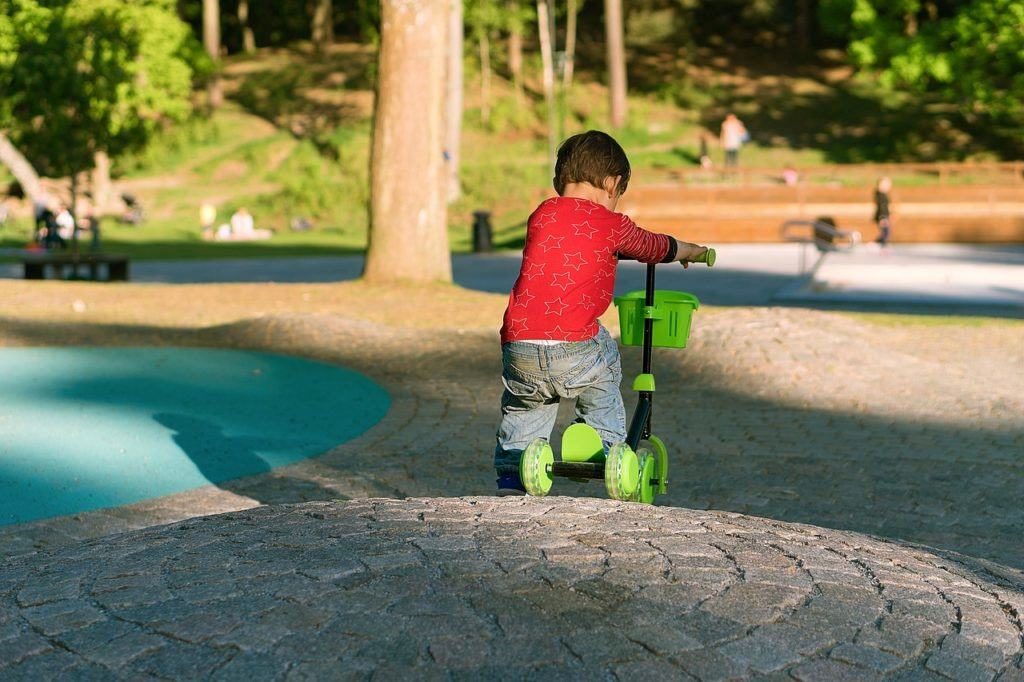
Taking a bike for a test ride is the final part of the process when buying a bicycle. Most shops will offer you the chance to take a bike out for anything from a few minutes up to an hour. They will normally ask for some kind of deposit to be left such as your driver’s license or a 1p charge to your credit card. So what should you be looking for on a test ride?
Well the first thing to be wary of is how good modern bikes feel. If you haven’t ridden a bike for a few years, or have been making do with a battered old bike, any new bike you jump on is going to feel fantastic. This may not mean the bike is the best available to you, just that it is much better than what you’ve had before. Try and bear this in mind when making your final decision.
The second thing is to be really clear of the questions you need to answer when you head out. If you’ve done all the research that I have suggested above, you should really be 99% of the way to making a decision. You may still have a couple of questions that you want to iron out. It might be testing one set of gears vs another or a sportier road bike vs a slightly more relaxed one. It may even be as simple as just double checking the size.
We think test rides are best summarised by a post I saw from ‘Velobro1’ over at the Bicycling.com forums. So rather than try and paraphrase an already great piece of writing I thought I would include his post directly:
Let me dive in here as I love this topic. For starters, I’m not only a shop owner, I’m an avid rider. Of the last 30+ bikes I’ve owned, I’ve test ridden not a single one of them. NOT ONE. In fact, I’ve ordered bikes with the most basic of specs and they’ve worked out beautifully. Of the last 20+ bikes I’ve owned, I’ve bought them sight unseen. Some of my team-issued bikes were given to me with only a top tube length as the guiding factor to which “size” to get. Granted, that was a tad lucky more often than not, but my point is… you don’t HAVE to spend hours hopping from bike to bike to find your winner. Let me also say, I am EXTREME when it comes to fitment. I will not buy a bike unless I can get it to fit with unparalleled perfection.
So, with that in mind, let’s say you do get the chance to ride a few bikes. What are you feeling? There are so many variables that make a bike feel a certain way. Let’s say you take out bike A and then bike B. Bike A might be smooth like butter. Maybe it’s because the tires were under inflated by 10 pounds. I’ve actually seen customers get so confused by jumping from bike to bike one guy actually rode a bike twice and gave it two entirely different reviews!!! I had to say, “dude…that’s the bike you loved an hour ago….” Things like seats, tape, wheels, tires, or just subtle adjustments can make one bike feel a particular way. As a cyclist of over a quarter century, I can’t isolate those variables…no way. Who could!?
There’s also psychology to test rides. If I hand a customer a bike and say…this thing rides like a jackhammer, they’ll come back and say, “oooo…it was bumpity.” If I say this bike rides like greased velvet, guess what they almost always report about the ride? That’s right. I’ve even seen customers say, “this bike didn’t shift well, and that one did….those bikes had IDENTICAL PARTS!
The best thing you’ll gain out of a test ride is a rough approximation as to how the fit WILL FEEL once you undergo a proper fitting. You really can’t even get a proper sense of handling on a test ride. Maybe one bike has the bars 1cm higher than the other. Maybe one bike has a 100mm stem and the other has a 120mm stem. That’ll impact handling. Maybe one bike has low spoke count wheels and another has traditional 32 spoke wheels. That’ll impact compliance. Maybe one bike has deep reach bars and another has shallow reach bars. That’ll translate to the responsiveness. All of these are variables that can be changed, by the way.
I will say, there is some merit to actually test riding full suspension bikes as you really do somewhat need to feel how the dynamic of a suspension system works with your riding style. But even then, that really requires a few hours to dial in that suspension and that of the other bikes in the test to be objective. I’ve seen people ride a $7000 Yeti full sus bike and say, “too soft…” Well, inflate the goddamn shock unit properly!
Ultimately, I see more people confused by test rides than those who have some epiphany and find their bike love. I also think this test ride thing is an internal justification process. If you walk in a shop, fall in love with a bike on the floor, guess what…when you test ride it, chances are you’ll find all sorts of attributes that you love. If I were to force you to ride the ugly left over bike from three seasons ago, you’d come back from a ride and tell me how it was harsh, slow, squirly, etc.
In the end, my advice is – buy a bike using your brain, not your ass. Do your research. Find out what your needs are and look for bikes designed to meet those needs. Same for fit. Find out what you NEED for fit and find bikes that suit those needs.
One last parting thought. I’m one of those guys that might hop on a new bike, ride it for weeks and weeks before it really feels like it’s mine. Bikes I love initially might eventually need a lot of tweaks. Bikes I don’t groove on right away also might need tweaks down the road. I might log 700 hours on a bike in a year. If I really thought I could get to know that bike down to the core in an hour ride, I’d be nuts.
Test rides. OVER RATED.
Research. OVER LOOKED.
Amen to that!
5. Other purchases to consider
Now you’re done with buying a bicycle there may well be a few additional purchases you need to make. Hopefully you’ve left yourself a bit of money to one side as we discussed in the budgeting section.
The accessories you need will very much depend on the type of riding you decide to do. If you are doing occasional weekend rides with the kids then bottles cages and gloves may be enough. For people who are heading out on the road and planning to do their own maintenance there will be many more.
Many accessories are far from essential even for the more dedicated beginner rider. You can start with the very basics and then build up over time. Below we have summarised some of the accessories, tools and clothing you may want to consider and from this you can pick what is right for you. We’ve tried to put them into a priority order but this will be very dependent on the type of riding you plan to do.
FOR YOU
‘Beginners guide to cycling gear’
- Helmet
- Gloves
- Padded cycling shorts (werecommend bib shorts)
- Cycling specific jersey
- Glasses
- Bike specific shoes
FOR THE BIKE
‘Beginners guide to cycling gear’
- Bottle cages and bottles
- Saddle bag
- Basic on the road repair tools
- Spare inner tubes
- Lights
- Bike computer
- Clipless pedals
FOR THE GARAGE
‘18 essential tools for the beginner mechanic’
- Bike cleaning set (though you may have most of this at home)
- Track pump
- Hex keys
- Spray lubricant
- Grease
- Bike stand
There you have it, almost everything you’ll need to think about when the time comes for you to buy a bike. If, somehow, we’ve missed anything, drop us an email with any questions.

